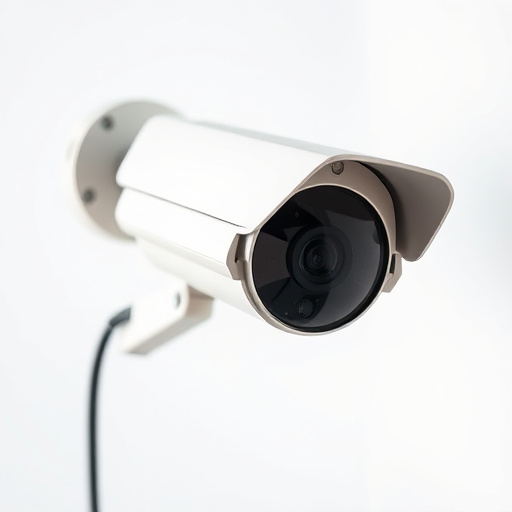Fake security camera mounting brackets claim versatile placement angles but often lack adjustability. Authentic brackets made of durable materials offer precise angle control for optimal security coverage. Reputable manufacturers ensure safe installation via clear instructions and certifications, emphasizing the importance of eye-level or elevated mounting near entry points for maximum deterrence.
“Fake security camera mounting brackets have become a growing concern in home and business security systems. This article delves into the intricacies of these deceptive devices, offering insights into their operation and potential risks. We explore common placement angles used by fake mounts to mimic legitimate setups, providing expert tips on detection. Additionally, best practices for secure camera installation are outlined, emphasizing crucial steps to prevent system compromise in terms of Fake Security Camera Placement Angles.”
- Understanding Fake Security Camera Brackets
- Common Placement Angles and Their Purposes
- Detecting Fake Mounts: Expert Tips
- Best Practices for Secure Camera Installation
Understanding Fake Security Camera Brackets
Fake security camera mounting brackets are designed to offer a discreet and effective solution for installing surveillance equipment, but many consumers are unaware of the potential pitfalls associated with them. These brackets often claim to provide a range of fake security camera placement angles, promising versatile and adjustable setups. However, it’s essential to understand that these brackets typically have limited adjustability, often restricting the camera’s view to specific, predetermined positions.
The marketing hype surrounding their versatility can be misleading, as many models only allow for basic adjustments like tilting or panning, failing to deliver the nuanced control needed for optimal security coverage. When purchasing a fake security camera bracket, it’s crucial to carefully consider the fake security camera placement angles it offers and assess if they align with your surveillance requirements, ensuring you don’t end up with inadequate or overly restrictive mounting options.
Common Placement Angles and Their Purposes
Security camera mounting brackets often come with adjustable features, allowing for strategic placement at various angles. Understanding common placement angles is key to effective surveillance. Typically, cameras are mounted at a 45-degree angle, providing a clear view and capturing a wide field of vision. This angle ensures optimal coverage without overlapping fields of view, making it ideal for general security needs.
For specific purposes, different angles may be employed. For example, a downward-facing angle of around 30 degrees is suitable for monitoring entrances and exits, while a slightly elevated 60-degree angle can help capture license plates or identify individuals in a parking lot. Adjusting these placement angles allows for tailored surveillance based on the area’s unique requirements, ensuring effective security measures.
Detecting Fake Mounts: Expert Tips
Detecting fake security camera mounting brackets is a crucial step in ensuring the effectiveness and integrity of your surveillance system. One of the first things to look for is the quality of the bracket. Authentic brackets are typically made from robust materials like aluminum or steel, designed to withstand various weather conditions and potential physical damage. They should have secure fastening mechanisms, such as hex bolts or security screws, which prevent unauthorized access.
Expert tips recommend verifying the mounting holes’ alignment, which should be precise and consistent with the camera’s specifications. Fake mounts might show inconsistencies in hole placement, affecting the camera’s stability and ideal placement angles. Additionally, checking for proper labeling and certifications can help identify genuine brackets. Reputable manufacturers often include detailed instructions and safety guidelines, ensuring safe and optimal fake security camera placement angles.
Best Practices for Secure Camera Installation
When installing a fake security camera, proper placement is key to enhancing actual security measures. Best practices involve strategically positioning the camera at angles that provide comprehensive coverage of areas needing surveillance. Typically, this means mounting the device at eye level or slightly elevated, allowing for clear, unobstructed views. Fake Security Camera Placement Angles should consider common entry points, such as doors and windows, ensuring full visibility to deter potential intruders.
Additionally, securing the camera bracket firmly is crucial. Utilize high-quality mounting brackets designed to withstand attempted tampering, and follow manufacturer instructions for proper installation. This prevents theft or disorientation of the camera, maintaining its effectiveness as a deterrent and surveillance tool.
Fake security camera mounting brackets can pose a significant security risk, leading to compromised surveillance systems. By understanding common placement angles and detecting these fake mounts, homeowners and businesses can ensure their cameras offer genuine protection. Adhering to best practices for secure camera installation is paramount, ensuring every component serves its intended purpose in maintaining a robust security system. When it comes to Fake Security Camera Placement Angles, awareness and careful consideration are your best defenses against potential vulnerabilities.
